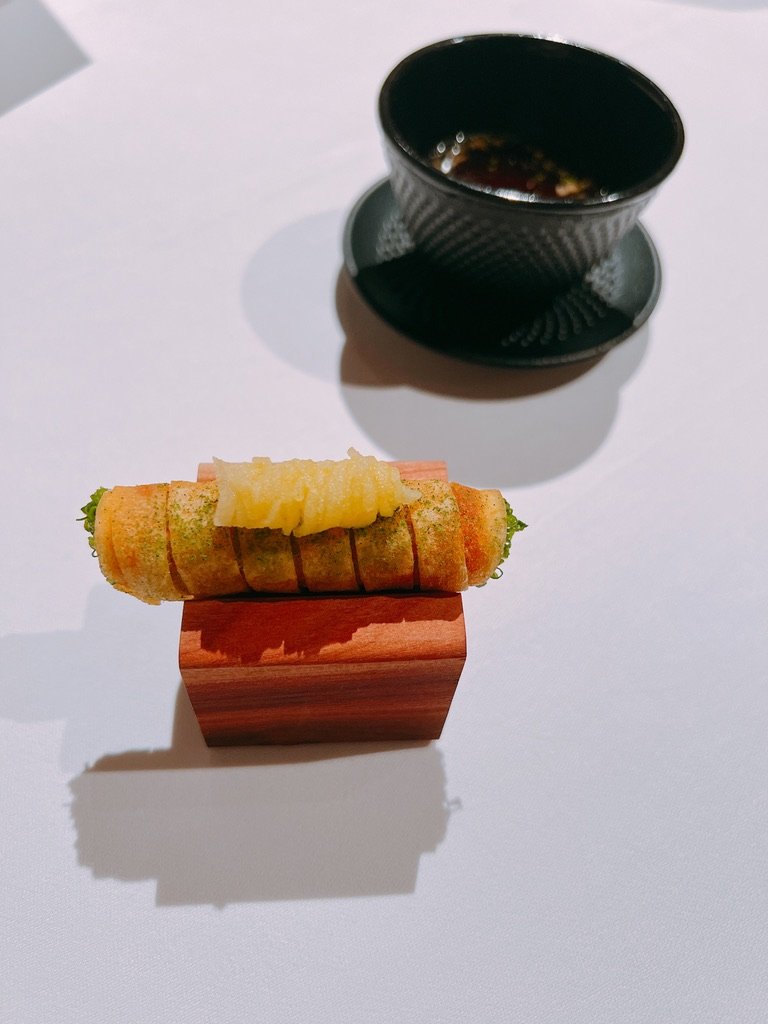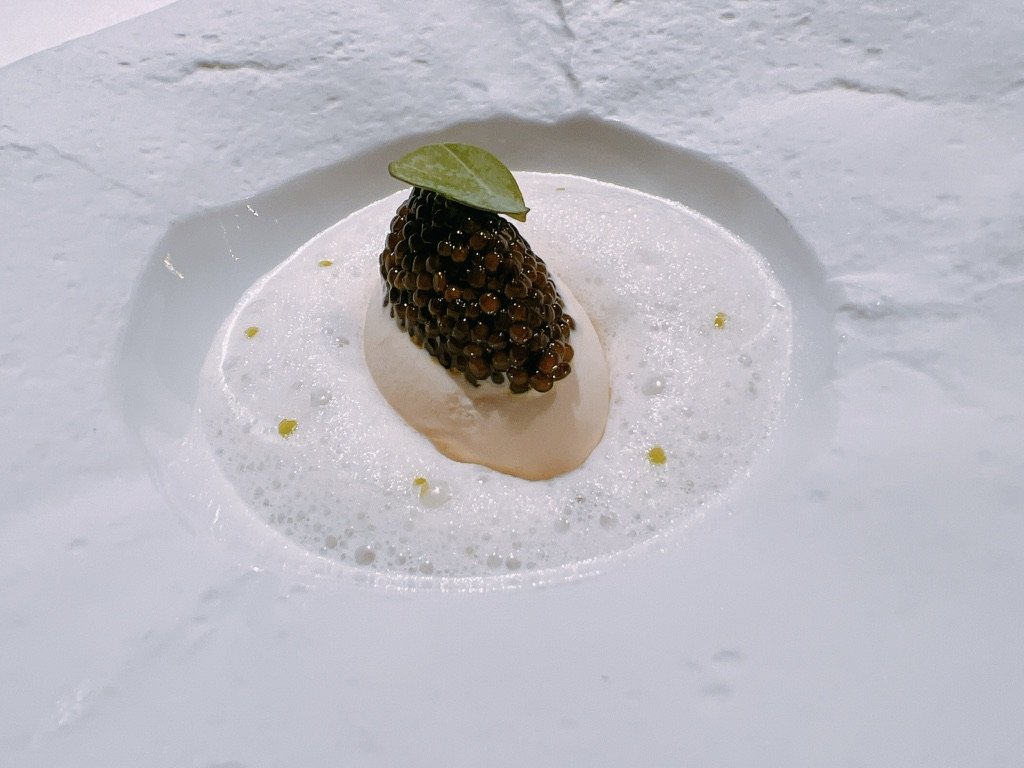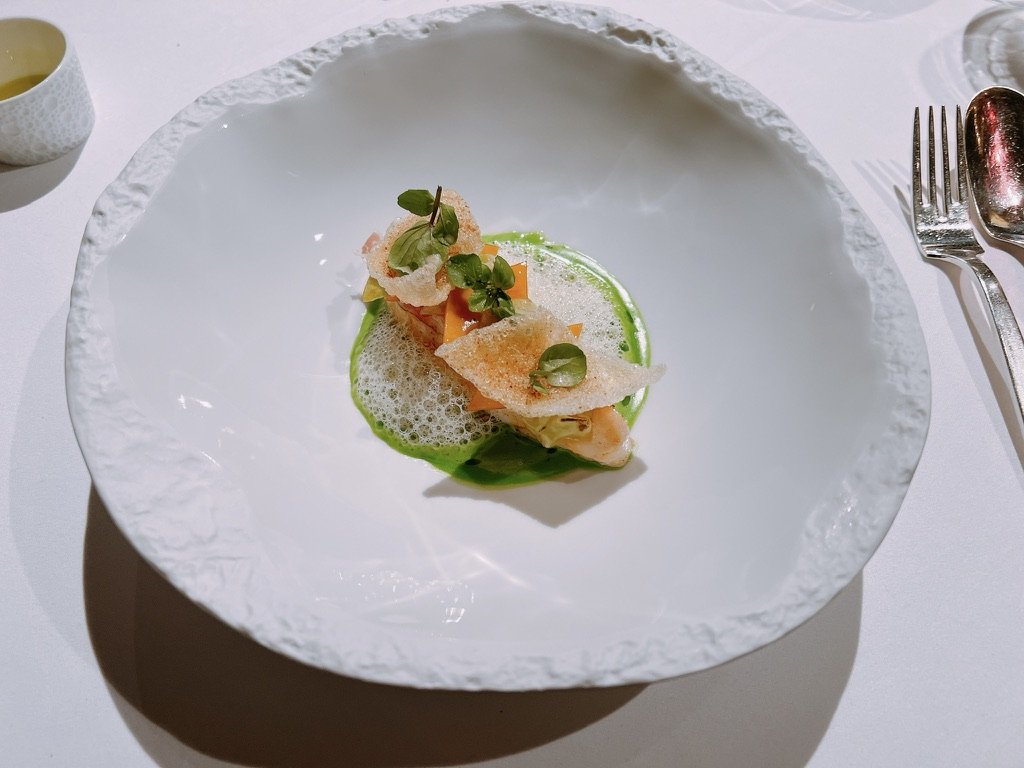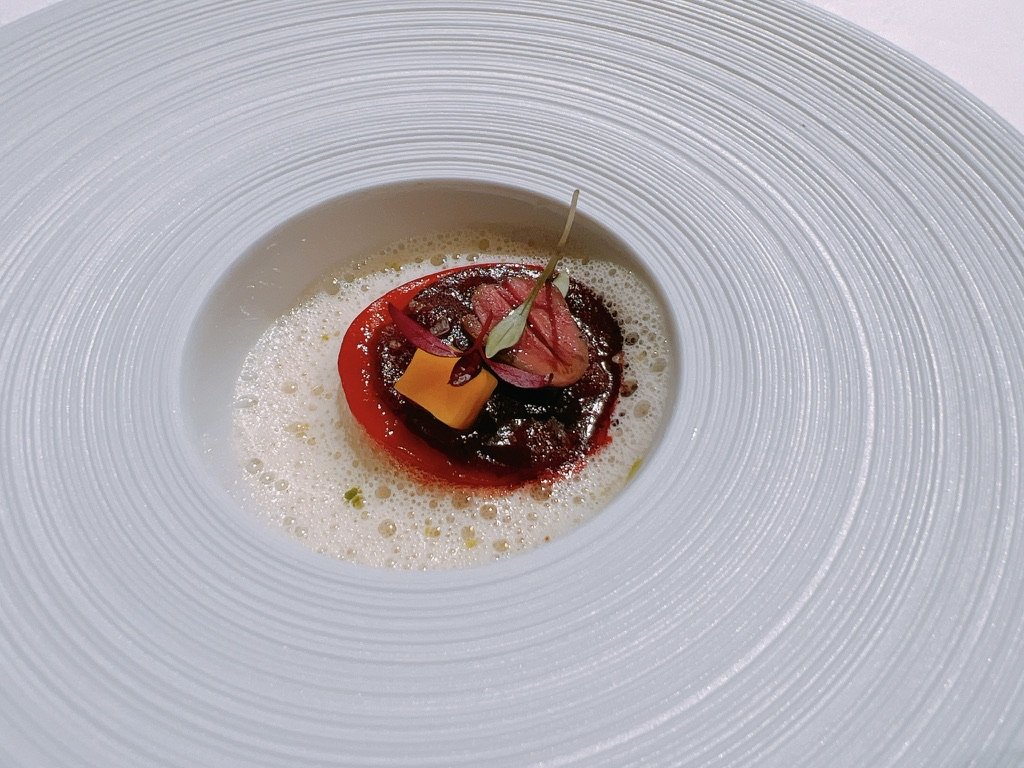Amador - Vienna
Rating: 17/20
Where: Vienna, Austria
When: Dinner for 2 on 9 April 2022
Cost per Person: Tasting menu 295 Euro, wine pairing 165 Euro
Accolades: 3 Michelin Stars
Why: Modern tasting menu with influences from Spain, Austria, Asia
Amador was a bit of a deja vu for me. In 2008, I visited Amador in its old location near Frankfurt. Since then, the chef moved his restaurant once in Germany, went bankrupt, and then moved the restaurant to its current location in Vienna. Is it still the same restaurant? There are similarities in the menu structure and cooking, but I feel moving to a different country and changing the menu to reflect local cuisine probably is a significant enough change to make this a "new" restaurant to be visited.
The restaurant was about a fifteen minute taxi ride north of downtown Vienna, and located in a former wine cellar. The shape of the room was somewhat unusual for a restaurant - a long half-cylindrical room, vaulted with red bricks. There was a lingering smell of spilled wine when entering the room, and at the end of the room, a glassed-off portion of the hall still held some barrels for the ongoing wine production.
Dinner was tasting menu only, with an optional wine pairing accompanying the "main" courses of the menu. 295 Euro for the tasting menu, 165 for the wine pairing, with a half-glass pairing (antiquatedly advertised as a "ladies' pairing") also available for half the price. Getting a pescatarian menu was not a problem, especially when mentioning it during the reservation process.
The dinner started with some small bites called "tapas". The chef is the German-born son of Spanish immigrants, and the food incorporated Spanish influences, in addition to French techniques and Asian flavors.
First was a play on Tafelspitz, a traditional Austrian dish of boiled meat with horseradish. Here, veal tartare was served in a crunchy pastry roll topped with apples and (mostly) horseradish. On the side was a beef broth poured over a custard. These dishes were intensely flavorful and delicious, only marred by an abundance of salt 19,
A "walk in the woods", a cracker topped with mushrooms and dehydrated deer liver was nice with strong mushroom flavors. The cracker turned out to be a tiny bit soggy, unfortunately 18.
Next was non-force-fed foie gras from Spain in a corn tortilla square topped with some duck skin. A pleasant dish, but I found the consistency of the corn tortilla somewhat odd - it stuck to your teeth. The foie gras disappeared among the other ingredients, so I can't comment on the difference between a force-fed and a non-force-fed foie gras. That in and of itself suggests that we should go for the latter for the animal's sake 17.
Alongside was a egg tortilla topped with a slice of chorizo and a quail egg. Fine, but nothing special 16.
Japanese and Spanish influences were next: raw tuna topped with a bit of wasabi and a tomato bread (the most classical of tapas). The tomato bread seemed to have a sugar coating that led to a unwelcome first taste impression - "sweet" is not something I usually want to associate with sashimi and wasabi. Taken together, this dish worked better, but still felt like a lost opportunity for something truly great 17.
The final amuse bouche was an "egg benedict", an egg yolk cooked (sous vide I presume) for one hour, having a nice consistency, topped with sweetbreads, truffles, spinach and a savory foam. A good dish, but if the egg yolk had been runnier to more easily mix with the other ingredients this would have been even better 17.
Course number one was a play on French cuisine. An ice cream of beurre blanc was topped with caviar, over pumpernickel croutons and two oysters. I love beurre blanc sauce, but was not too enamored with its frozen version. This was just too heavy - think of eating frozen butter. This would be a better if it was lightened up a bit. Other than the ice cream, the dish was great 14.
Langoustine was served as a two-part dish. First, a cooked langoustine with some veal head and a miso mushroom broth. Excellent flavors, lots of umami, a nicely cooked langoustine, but again too generous with salt 17. Alongside was a puffed rice mochi ball filled with veal tongue (more langoustine in the pescatarian version). This could have used a bit more flavor, the mochi texture overwhelmed the ground veal tongue 15.
The following fish dish, a turbot resting on a pea sauce, with bacon, house-made noodles and shrimp-chip-like crackers was wonderful. The flavors popped, the peas were especially amazing. The turbot felt a tad overcooked, but overall a winner 19.
Thai influences abounded in the final savory dish, served in two parts. Pigeon leg was made into a ravioli topped with half a pigeon heart. This was surrounded by three Thai curries: a tom khai base underneath, yellow curry in the ravioli and red curry on top. An explosion of flavors, each very well done 18.
The pigeon breast came next, in a red beet sauce covered by a purple curry sheet. Red and yellow beets, as well as mango pieces completed the dish. The pigeon was a tad dry, especially compared to the moist hake that was served as the pescatarian replacement 17.
According to our server, some people like cheese courses and some hate them (the latter group maybe hasn't been to the right places yet...). So the next course was a compromise: blue cheese covered with cherry ice and cherry juice as well as a caramel pumpkin seed cracker. We have Cheese, but still sweetness - not bad, but why not go all the way and whip up the cheese to make the two meld together instead of being mostly separate 16?
Last "main" course: an Apfelstrudel 2.0. Created for a lunch in honor of the recently visiting Spanish king, this resembled a Lego Duplo block covered by dollops of cream and apple. The ingredients of a regular apple strudel (apples, cinnamon, dough, cream, ...) were combined in a new way. The Lego block symbolized playfulness and childhood, when Austrians would have had their first experience with apple strudels. This all adds up to pleasant, but not mind-blowing 15. The server claimed that the chef was the first to use silicon molds to create custom shapes for desserts, such as this one. Not sure if that's true, but a nice accomplishment if so.
Next to the Apfelstrudel 2.0, a miniature "real" apple strudel was served - too little dough and not enough juiciness in the apple filling, this was underwhelming 13.
Some petit fours concluded dinner: a matcha lollipop served in the hand 15, a cuba libre gummy 15, a yogurt blackberry pavlova 17, a sunflower chocolate tartlet 16 and a white chocolate praline filled with raspberry and pig's blood (sic!). The latter was inspired by an Austrian artist who paints canvases with pig's blood. I wonder if the canvases come with a best-before date? Not my favorite chocolate 13, the pescatarian version without the blood was much cleaner and better 16.
A semi-sweet dessert with flavors and textures of pretzels and peanuts concluded the dinner. We were told that the chef thinks that one should not end dinner on a purely sweet note 17.
The wine pairing was generally fine, but no wines stood out as particularly amazing, so at 165 Euros this was pretty steep for what you got.
Overall: An enjoyable dinner in an unusual space. I appreciated the tapas-like amuses and desserts, offering lots of different flavors. One recurring concern was the heavy use of salt in many dishes. The high-points of our dinner (when ignoring the salt) were high indeed, but there were a number of dishes that had great ideas but needed a bit more tweaking to really fulfill those. Not sure if the absence of the chef tonight (traveling on business) made a difference 17.



















